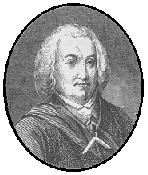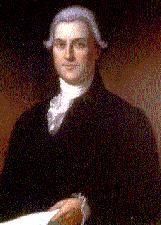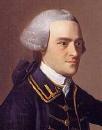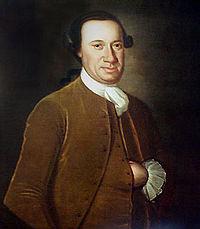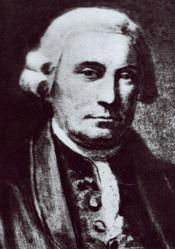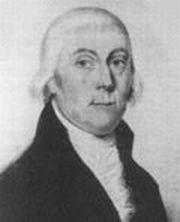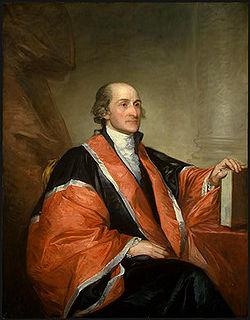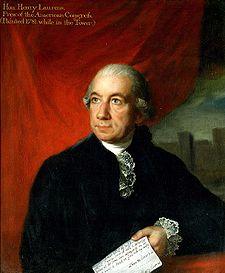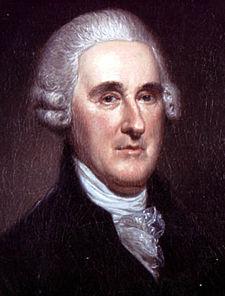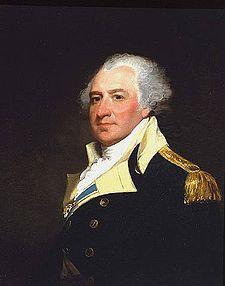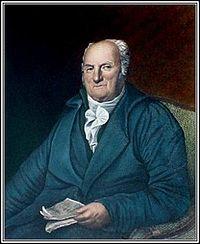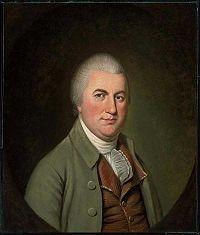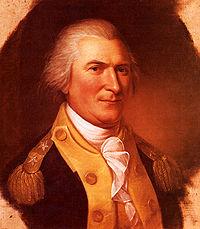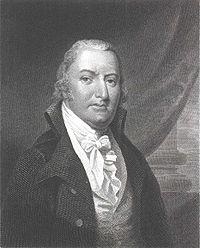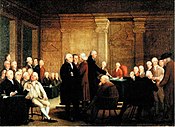President of the Continental Congress
|
|
| Continental Congress |
| First Continental Congress |
- Declaration and Resolves
- Continental Association
- First Petition to the King
|
| Second Continental Congress |
- Olive Branch Petition
- Declaration of the Causes...
- Declaration of Independence
- Articles of Confederation
|
| Confederation Congress |
|
|
| Members |
- List of delegates
- Presidents
|
|
The President of the Continental Congress was the presiding officer of the Continental Congress, the convention of delegates that emerged as the first national government of the United States during the American Revolution. The president was a member of Congress elected by the other delegates to serve as an impartial moderator during meetings of Congress. Designed to be a largely ceremonial position without much influence, the office was unrelated to the later office of President of the United States.
The first President of Congress was Peyton Randolph, who was elected on September 5, 1774. The last president, Cyrus Griffin, resigned in November 1788. Because of the limited role of the office, the Presidents of Congress are among the lesser known leaders of the American Revolution. The best-known President of Congress is John Hancock, remembered for his large, bold signature on the Declaration of Independence, which was adopted and signed during his presidency.
Title
The presiding officer of the Continental Congress was usually styled "President of the Congress" or "President of Congress". After the Articles of Confederation were adopted on March 1, 1781, the Continental Congress, previously officially known as simply "The Congress", became officially known as "The United States in Congress Assembled."Thereafter, the president was occasionally referred to as the "President of the United States in Congress Assembled", although "President of (the) Congress" continued to be used in most official documents.
Role
The President of Congress was, by design, a position with little authority. The Continental Congress, fearful of concentrating political power in an individual, gave their presiding officer even less responsibility than the speakers in the lower houses of the colonial assemblies. Unlike some colonial speakers, the President of Congress could not, for example, set the legislative agenda or make committee appointments. The president could not meet privately with foreign leaders; such meetings were held with committees or the entire Congress.
The presidency was a largely ceremonial position. The primary role of the office was to preside over meetings of Congress, which entailed serving as an impartial moderator during debates. When Congress would resolve itself into a Committee of the Whole to discuss important matters, the president would relinquish his chair to the chairman of the Committee of the Whole.The president was also responsible for dealing with a large amount of official correspondence, but he could not answer any letter without being instructed to do so by Congress.Presidents also signed, but did not write, Congress's official documents. These limitations could be frustrating, because a delegate essentially declined in influence when he was elected president. Henry Laurens, for example, resigned his presidency so that he could play a more active role in Congress.
Term of office
Before the Articles of Confederation were ratified on March 1, 1781, Presidents of Congress served terms of no specific duration; their tenure ended when they resigned or, lacking an official resignation, when Congress selected a successor. When John Hancock was elected to preside over the Second Continental Congress in May 1775, his position was somewhat ambiguous, because it was not clear if President Peyton Randolph had permanently resigned or was on a leave of absence.[ The situation became uncomfortable when Randolph returned to Congress in September 1775. Some delegates thought Hancock should have stepped down, but he did not; the matter was resolved only by Randolph's sudden death in October. Ambiguity also clouded the end of Hancock's term: he left in October 1777 for what he believed was an extended leave of absence, only to find upon his return that Congress had elected Henry Laurens to replace him.
The only reference to the President of Congress in the Articles of Confederation is a brief mention of the term of office:
The United States in Congress assembled shall have authority ... to appoint one of their members to preside, provided that no person be allowed to serve in the office of president more than one year in any term of three years....
Previously a president could serve indefinitely—Hancock presided for more than two years—but now presidents would serve a one-year term. When the Articles went into effect, however, Congress did not hold an election for a new president. Instead, Samuel Huntington continued to serve as President of Congress until he asked to be relieved due to ill health in July 1781. Samuel Johnston was selected as Huntington's replacement, but he declined the office, and so Thomas McKean was elected as the next presiding officer. President McKean resigned on October 23, 1781, after hearing news of the British surrender at Yorktown, but Congress asked him to remain in office until November, when a new session of Congress was scheduled to begin. (The Articles of Confederation called for Congress to meet "on the first Monday in November, in every year....") On November 5, 1781, John Hanson of Maryland became the first President of Congress to be elected to an annual term as specified under the Articles of Confederation.
Decline
Congress, and its presidency, declined in importance with the end of the American Revolutionary War. Increasingly, delegates elected to the Congress declined to serve, the leading men in each state preferred to serve in state government, and the Congress had difficulty establishing a quorum. President Hanson wanted to resign, but his departure would have left Congress without a quorum to select a successor, and so he stayed on.President Thomas Mifflin found it difficult to convince the states to send enough delegates to Congress to ratify the 1783 Treaty of Paris. For six weeks in 1784, President Richard Henry Lee did not come to Congress, but instead instructed secretary Charles Thomson to forward any papers that needed his signature. John Hancock was elected to a second term in 1785, even though he was not then in Congress; he never took his seat, citing poor health, though he may have been uninterested in the position. When Nathaniel Gorham resigned in November 1786, it was months before enough members were present in Congress to elect a new president.The ratification of the new United States Constitution in June 1788 reduced the Confederation Congress to the status of a caretaker government. Cyrus Griffin, the final President of Congress, resigned in November 1788 after only two delegates showed up for the new session of Congress.
Relationship to the US Presidency
Beyond a similarity of title, the office of President of Congress "bore no relationship"to the later office of President of the United States. As historian Edmund Burnett wrote:
[T]he President of the United States is scarcely in any sense the successor of the presidents of the old Congress. The presidents of Congress were almost solely presiding officers, possessing scarcely a shred of executive or administrative functions; whereas the President of the United States is almost solely an executive officer, with no presiding duties at all. Barring a likeness in social and diplomatic precedence, the two offices are identical only in the possession of the same title.
Because John Hanson was the first president elected under the terms of the Articles of Confederation, his grandson promoted him as the "first President of the United States" and waged a successful campaign to have Hanson's statue placed in Statuary Hall in the U.S. Capitol, even though Hanson was not really one of Maryland's foremost leaders of the Revolutionary era.
List of presidents
| # |
Name |
State/colony |
Term start |
Term end |
Months in term |
| 1 |
Peyton Randolph |
Virginia |
September 5, 1774 |
October 22, 1774 |
2 |
| 2 |
Henry Middleton |
South Carolina |
October 22, 1774 |
October 26, 1774 |
1 |
| 3 |
Peyton Randolph |
Virginia |
May 10, 1775 |
May 24, 1775 |
1 |
| 4 |
John Hancock |
Massachusetts |
May 24, 1775 |
October 29, 1777 |
29 |
| 5 |
Henry Laurens |
South Carolina |
November 1, 1777 |
December 9, 1778 |
13 |
| 6 |
John Jay |
New York |
December 10, 1778 |
September 28, 1779 |
10 |
| 7 |
Samuel Huntington |
Connecticut |
September 28, 1779 |
July 10, 1781 |
21 |
| 8 |
Thomas McKean |
Delaware |
July 10, 1781 |
November 5, 1781 |
4 |
| 9 |
John Hanson |
Maryland |
November 5, 1781 |
November 4, 1782 |
12 |
| 10 |
Elias Boudinot |
New Jersey |
November 4, 1782 |
November 3, 1783 |
12 |
| 11 |
Thomas Mifflin |
Pennsylvania |
November 3, 1783 |
June 3, 1784 |
7 |
| 12 |
Richard Henry Lee |
Virginia |
November 30, 1784 |
November 4, 1785 |
11 |
| 13 |
John Hancock |
Massachusetts |
November 23, 1785 |
June 5, 1786 |
6 |
| 14 |
Nathaniel Gorham |
Massachusetts |
June 6, 1786 |
November 3, 1786 |
5 |
| 15 |
Arthur St. Clair |
Pennsylvania |
February 2, 1787 |
November 4, 1787 |
10 |
| 16 |
Cyrus Griffin |
Virginia |
January 22, 1788 |
November 15, 1788 ......... |
10 |
Sources for this table are Wilson, Congressional Dynamics, 77, the Biographical Directory of the United States Congress, and Presidents of the Continental Congress at Archontology.org. There are some date discrepancies, based on differing interpretations of when a president's term effectively ended.
-
- Table notes
- Start of the First Continental Congress
- Start of the Second Continental Congress
Secretary Charles Thomson fulfilled presidential duties from October 29, 1777, to November 1, 1777.
- Articles of Confederation were ratified during term
- First president elected under the Articles of Confederation
- Daniel Carroll acted as chairman from November 3, 1783, to December 13, 1783.
- Hancock did not report to Congress for his second term, so David Ramsay (November 23, 1785 – May 12, 1786) and Nathaniel Gorham (May 15, 1786 – June 5, 1786) acted as chairmen.
- After Griffin's resignation, the presidency was vacant.
|
